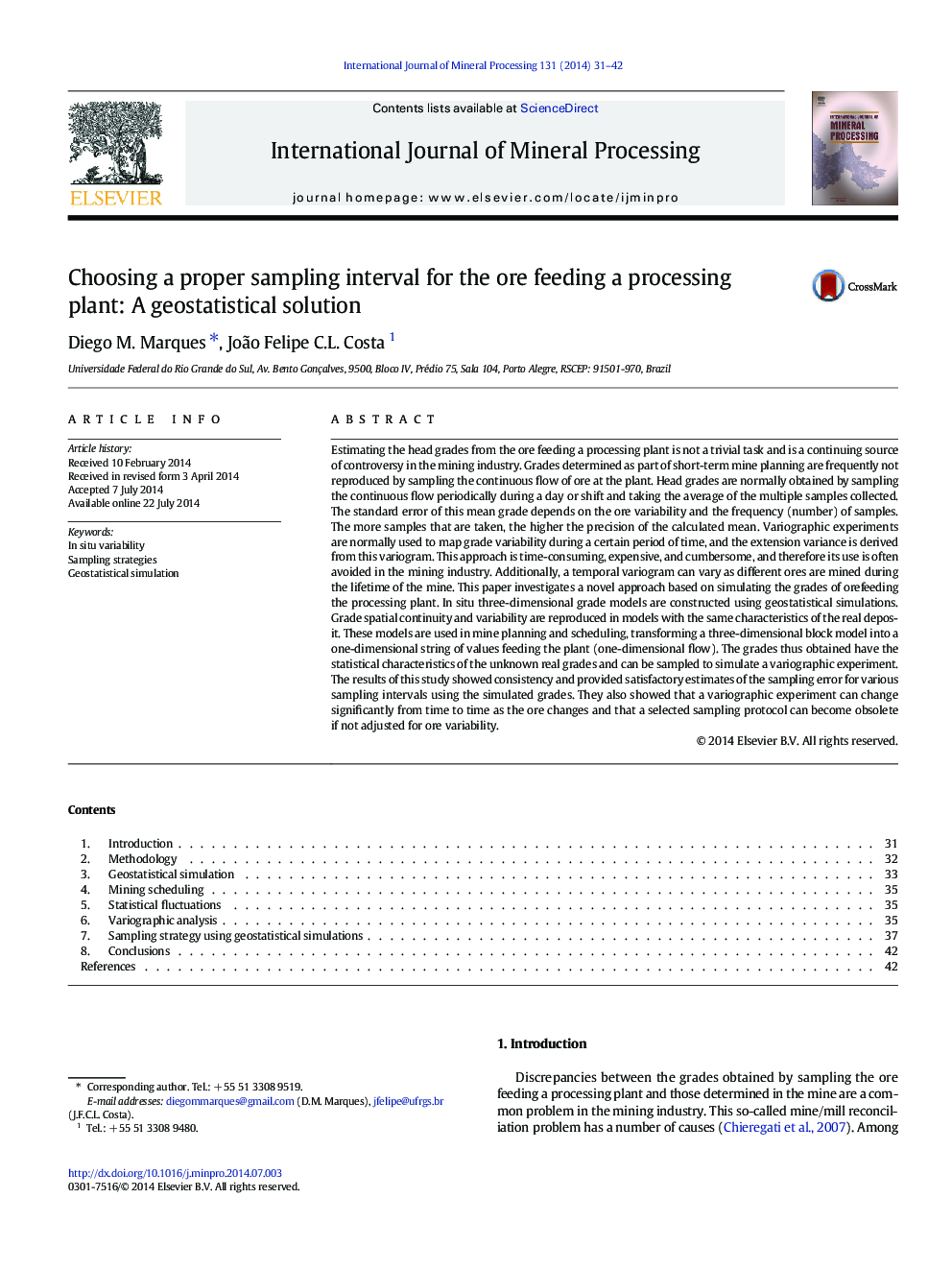| Article ID | Journal | Published Year | Pages | File Type |
|---|---|---|---|---|
| 213957 | International Journal of Mineral Processing | 2014 | 12 Pages |
•How to define the sampling interval without physically sampling•Mapping the space of uncertainty by using stochastic simulations•Using a new combination of geostatistical simulation and sampling mimicking
Estimating the head grades from the ore feeding a processing plant is not a trivial task and is a continuing source of controversy in the mining industry. Grades determined as part of short-term mine planning are frequently not reproduced by sampling the continuous flow of ore at the plant. Head grades are normally obtained by sampling the continuous flow periodically during a day or shift and taking the average of the multiple samples collected. The standard error of this mean grade depends on the ore variability and the frequency (number) of samples. The more samples that are taken, the higher the precision of the calculated mean. Variographic experiments are normally used to map grade variability during a certain period of time, and the extension variance is derived from this variogram. This approach is time-consuming, expensive, and cumbersome, and therefore its use is often avoided in the mining industry. Additionally, a temporal variogram can vary as different ores are mined during the lifetime of the mine. This paper investigates a novel approach based on simulating the grades of orefeeding the processing plant. In situ three-dimensional grade models are constructed using geostatistical simulations. Grade spatial continuity and variability are reproduced in models with the same characteristics of the real deposit. These models are used in mine planning and scheduling, transforming a three-dimensional block model into a one-dimensional string of values feeding the plant (one-dimensional flow). The grades thus obtained have the statistical characteristics of the unknown real grades and can be sampled to simulate a variographic experiment. The results of this study showed consistency and provided satisfactory estimates of the sampling error for various sampling intervals using the simulated grades. They also showed that a variographic experiment can change significantly from time to time as the ore changes and that a selected sampling protocol can become obsolete if not adjusted for ore variability.
